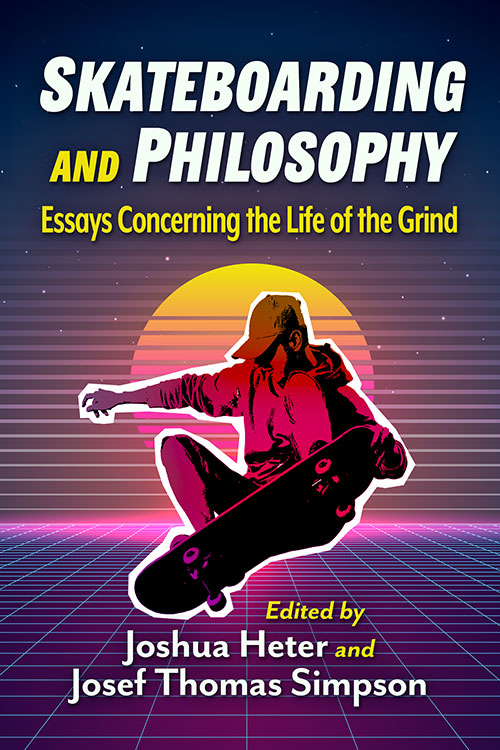Posts cover a broad range of topics pertaining to my current research and personal interests. I try to post regularly, but recent and current projects have taken some time away from that frequency. New posts are announced via Mastodon. You can also subscribe via your favorite feed aggregator.

The Sound of One Deck Snapping
The sudden disruptive jolt that follows from not landing an attempted skateboard trick can offer more than an opportunity to snarl at a blameless handrail or weathered curb.

Subversive Goblins and Wabi-Sabi Hobbits
Wabi-sabi, a concept in Japanese aesthetics revolving around the beauty of imperfection and impermanence, aligns well with both the goblincore aesthetic and subculture and some of J.R.R. Tolkien’s short, hairy creatures.

Close Your Eyes, Breathe, and Stick It to the Man
Buddhist philosophy and punk ideology probably don’t come across at first glance as complementary models for attaining a life without suffering. But they both advocate principles that demand the raising of one’s fists to put an end to an unsatisfying, oppressive, and cyclic existence in very similar ways.

Remix Theory and Buddhist Philosophy: A Primer
When production and output is understood as being dependent upon all else in causal-effective chains of interrelation and combinatorality, remix theory starts to sound quite a bit like…Buddhist philosophy.

The Universe, in a Grain
As the building block of civilization, sand’s conditional and combinatorial nature can help us understand concepts like impermanence and interdependence in Buddhist philosophy, especially when used in creative, meditative practices that facilitate mindful awareness.

Bricolage Blocks and Buddhist Bricoleurs
Reframing the mining and crafting of blocks in Minecraft as making do with sampled sourced material can help us rethink and reconsider concepts like bricolage and techniques like upāya.

Illuminating the Shadows
Piratical databases of electronic texts challenge the structures that otherwise keep such material closed off and inaccessible. These so-called shadow libraries help push for a more informed, creative, and critical society that hinges upon accessibility rather than censorship and control.

The Right to Copy in the Context of Religion
Even under the notion or guise of sanctity, access and control are still very closely tied to power structures and the hierarchies that establish and regulate them, and copyright law has played a large role in how this has developed.